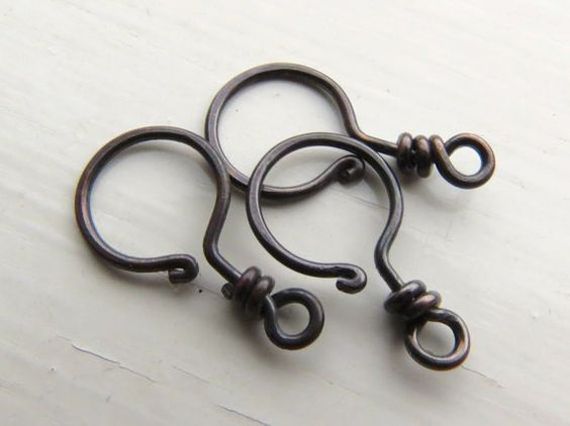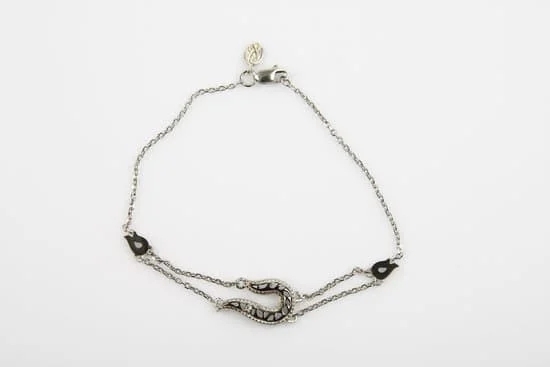When it comes to creating beautiful jewelry pieces, the choice between beading wire and jewelry wire plays a crucial role in the construction and overall quality of the finished product. Both types of wires are essential components in jewelry making, each with its own unique characteristics and purposes.
Beading wire is often used for stringing beads in bracelets, necklaces, and earrings, providing flexibility and strength to hold various types of beads securely in place. On the other hand, jewelry wire is typically used for crafting intricate wirework designs, such as wrapped pendants or elaborate wire sculptures.
While both beading wire and jewelry wire serve distinct purposes in jewelry making, they differ significantly in terms of materials used. Beading wire is usually made of multiple strands of stainless steel or nylon coated with a protective layer to prevent tangling and abrasion. In contrast, jewelry wire is commonly made from metals like sterling silver, gold-filled, or copper for added elegance and durability.
The Differences in Materials Used for Beading Wire vs Jewelry Wire
When it comes to choosing the right wire for your jewelry making projects, understanding the differences in materials used for beading wire versus jewelry wire is crucial. Beading wire is typically made from multiple strands of stainless steel or nylon coated with a thin layer of nylon, which provides flexibility and strength.
On the other hand, jewelry wire, also known as craft wire or artistic wire, is usually made from a single strand of metal such as copper, aluminum, or sterling silver.
One key distinction between beading wire and jewelry wire lies in their composition and construction. Beading wire, with its multiple strands encased in nylon coating, offers more flexibility and prevents kinking or tangling. This makes it ideal for projects that require a lot of movement or bending, such as bracelets or necklaces. Jewelry wire, on the other hand, is often stiffer and holds its shape well, making it perfect for creating intricate designs like wire-wrapped pendants or earrings.
In addition to their composition, the materials used for beading wire vs jewelry wire also affect the overall appearance of the finished pieces. Beading wire’s nylon coating comes in a variety of colors, allowing you to choose one that complements your beads or stones.
On the contrary, jewelry wire’s metallic finish adds a sleek and elegant touch to your creations. Depending on the style you aim to achieve – whether it’s something vibrant and colorful or more refined and minimalist – selecting the right type of wire can enhance the overall look of your jewelry design.
Strength and Durability Comparison Between Beading Wire and Jewelry Wire
When comparing beading wire vs jewelry wire in terms of strength and durability, it is essential to understand the differences in materials used for each type of wire. Beading wire is typically made of multiple strands of stainless steel or nylon coated with a thin layer of plastic to prevent fraying. This construction gives beading wire a high level of strength, making it ideal for supporting heavier beads or creating jewelry pieces that require more stability.
On the other hand, jewelry wire, also known as craft wire, can come in various materials such as copper, silver, gold-filled, or aluminum. While jewelry wire offers different levels of strength depending on the metal used, it generally cannot match the durability and load-bearing capacity of beading wire. Jewelry wire is better suited for delicate designs or projects that do not require as much support as those made with beading wire.
Usage in Different Jewelry Making Techniques
Depending on the technique you are using for your jewelry-making project, the choice between beading wire and jewelry wire can vary. Beading wire is commonly preferred for stringing beads that are heavy or have sharp edges that can easily cut through other types of wires.
Its durability also makes it suitable for creating bracelets and necklaces that will undergo frequent wear and tear. On the other hand, jewelry wire is often chosen for intricate wire-wrapping designs where flexibility and malleability are more important than sheer strength.
Longevity and Wearability
In terms of longevity and wearability, beading wire tends to outperform jewelry wire due to its higher resistance to bending and stretching over time. This makes it a reliable choice for pieces that will see regular use without sacrificing their structural integrity.
Jewelry wire may need to be replaced more frequently if used in high-stress points within a piece or exposed to constant movement that could cause it to weaken or break. Considering the intended use and frequency of wear can help you determine which type of wire is best suited for your design needs.
Flexibility and Ease of Use of Beading Wire vs Jewelry Wire
Flexibility of Beading Wire vs. Jewelry Wire
Beading wire and jewelry wire vary in terms of flexibility, which directly impacts the ease of use for different types of jewelry-making projects. Beading wire is typically constructed with multiple strands of stainless steel or nylon coated with materials like nylon or hypoallergenic plastic.
This construction allows beading wire to be flexible yet sturdy, making it ideal for projects that require bending and shaping without losing its strength. On the other hand, jewelry wire is commonly made of single-strand metals like copper, sterling silver, or gold-filled wire, providing a more rigid structure compared to beading wire.
Ease of Use in Different Projects
When considering the ease of use between beading wire and jewelry wire, it is essential to analyze the specific requirements of your jewelry-making project. Beading wire excels in projects that involve stringing beads and creating intricate patterns due to its flexibility and ability to maintain shape.
It is commonly used in designs like bracelets, necklaces, and earrings that require movement and drape. In contrast, jewelry wire’s rigidity makes it more suitable for structural components such as clasps, jump rings, and connectors where durability and firmness are key.
Choosing the Right Wire for Your Project
To determine whether beading wire or jewelry wire is more suitable for your project, consider the design elements you wish to incorporate. If you require a flexible strand that can support beads while maintaining shape in free-form designs, opt for beading wire.
On the other hand, if your project involves intricate metalwork or requires secure connections in structural components, jewelry wire may be the better choice. Ultimately, selecting the right type of wire will depend on your design vision and the practical needs of your jewelry pieces.
Aesthetics and Appearance of Beading Wire and Jewelry Wire in Finished Jewelry Pieces
When it comes to creating beautiful jewelry pieces, the aesthetics and appearance of the materials used play a crucial role. This holds true when comparing beading wire vs jewelry wire. Both types of wire can offer distinct visual characteristics that can enhance the overall look of your finished piece.
1. Beading Wire: Beading wire is typically made of multiple strands of stainless steel or nylon coated in a smooth, protective layer. This coating not only adds durability but also provides a polished finish to the wire. Beading wire comes in various colors and finishes, allowing you to match it with different beads and components seamlessly. The sleek appearance of beading wire makes it ideal for creating elegant and sophisticated jewelry designs.
2. Jewelry Wire: On the other hand, jewelry wire is often made of single strands of metal like copper, sterling silver, or gold. Jewelry wire comes in different gauges and hardness levels, giving you more flexibility in terms of design options.
The metallic shine of jewelry wire can add a touch of luxury to your pieces, making them stand out. Additionally, jewelry wire can be manipulated easily to create intricate patterns and shapes, adding a unique aesthetic appeal to your jewelry creations.
3. Comparison: When comparing the aesthetics and appearance of beading wire vs jewelry wire in finished jewelry pieces, it ultimately depends on the style you are aiming for. Beading wire is excellent for creating sleek and modern designs with a professional finish, while jewelry wire offers a more traditional and luxurious look with its metallic gleam. Consider the overall aesthetic you want to achieve when choosing between these two types of wires for your next jewelry project.
In summary, both beading wire and jewelry wire present unique visual qualities that can enhance the beauty of your finished pieces. Whether you prefer the polished look of beading wire or the metallic shine of jewelry wire, selecting the right type of wire can elevate your design while complementing your chosen beads and components perfectly. Experiment with different wires to discover which one best suits your style and vision for your handmade jewelry creations.
Cost Comparison
When it comes to the cost comparison between beading wire and jewelry wire, several factors come into play that can influence the overall price of each option. Beading wire is typically made from stainless steel or nylon-coated steel, which are more affordable materials compared to the various metals used in jewelry wire such as sterling silver, gold-filled, or copper. This fundamental difference in materials directly affects the cost of the wires.
In terms of longevity and durability, jewelry wire tends to have a higher price point due to its higher quality materials. Jewelry wire made from precious metals like gold or silver are more resistant to tarnishing and corrosion compared to some beading wires. This increased durability can result in less frequent replacements and maintenance, ultimately impacting the long-term cost-effectiveness of using jewelry wires in your projects.
Additionally, the thickness and gauge of the wire can also affect the cost comparison between beading wire and jewelry wire. Thicker gauges generally require more material and may be pricier than thinner gauges.
However, it’s essential to consider your project needs when choosing between these options – while beading wire may initially seem more economical, if your design requires a stronger or more durable material such as jewelry wire, it may be worth investing in despite the higher upfront cost. Ultimately, determining which type of wire is more economical for your projects will depend on balancing initial costs with long-term durability and aesthetics needs.
Types of Projects Best Suited for Beading Wire vs Jewelry Wire
When it comes to choosing between beading wire and jewelry wire for your projects, it’s essential to consider the type of project you will be working on. Beading wire is ideal for projects that require flexibility and drape, such as necklaces, bracelets, and earrings with multiple beads. The softness and flexibility of beading wire make it perfect for intricate beadwork and designs that require a lot of movement.
On the other hand, jewelry wire is best suited for projects that require structure and stability, such as wire-wrapped pendants, chainmaille designs, and intricate wirework. Jewelry wire typically comes in different shapes like round, square, or half-round, making it versatile for creating detailed designs and shapes. It is also commonly used for making clasps, ear wires, and other foundational components of jewelry pieces.
Overall, the choice between beading wire and jewelry wire ultimately depends on the specific requirements of your project. Consider factors such as the weight of the beads you’ll be using, the level of detail in your design, and the overall aesthetic you want to achieve. Experimenting with both types of wires in various projects can also help you understand their strengths and limitations better.
| Projects | Recommended Wire Type |
|---|---|
| Necklaces with multiple beads | Beading Wire |
| Wire-wrapped pendants | Jewelry Wire |
| Earrings with intricate beadwork | Beading Wire |
Tips and Recommendations for Choosing the Right Wire for Your Jewelry Making Needs
When it comes to choosing the right wire for your jewelry making needs, whether it be beading wire or jewelry wire, there are several factors to consider in order to achieve the desired result. One of the key considerations is the type of project you will be working on.
Beading wire, usually made of multiple strands of stainless steel or nylon coated with soft materials like Teflon or nylon, is ideal for stringing beads as it provides flexibility and prevents kinking. On the other hand, jewelry wire, typically made of metals like copper, silver, or gold, is better suited for intricate wirework and shaping due to its rigidity.
Another important factor to keep in mind when choosing between beading wire vs. jewelry wire is the strength and durability required for your project. Beading wire tends to be more durable and able to withstand heavier beads without breaking compared to jewelry wire which may be more prone to bending or snapping under pressure.
If you are creating a piece that will experience a lot of wear and tear, such as bracelets or necklaces that will be worn frequently, opting for a stronger material like beading wire could be advantageous.
In terms of aesthetics and appearance, both beading wire and jewelry wire offer different visual effects in finished jewelry pieces. Beading wire tends to have a softer look and can easily blend into designs due to its flexibility, while jewelry wire provides a more structured and defined finish that can enhance intricate details in your creations.
Depending on the style you want to achieve in your jewelry pieces, selecting the appropriate wire type can significantly impact the overall look and feel of your designs.
Conclusion
In conclusion, understanding the differences between beading wire and jewelry wire is crucial for jewelry makers looking to create high-quality pieces. The materials used for each type of wire play a significant role in determining their strength, durability, flexibility, and ease of use.
Beading wire, typically made of multiple strands of steel or nylon coated in plastic, offers excellent strength and durability, making it ideal for heavy beads or projects requiring more support. On the other hand, jewelry wire, commonly crafted from metals like copper, silver, or gold, provides flexibility and ease of manipulation for intricate designs.
When considering the aesthetics and appearance of finished jewelry pieces, both beading wire and jewelry wire have their own unique characteristics that can enhance the overall look of creations. Beading wire tends to be more subtle in appearance due to its coating but offers a variety of colors to complement different bead styles.
Jewelry wire often shines brightly based on the metal used, adding a touch of elegance to designs. Additionally, cost comparison shows that beading wire is generally more economical than jewelry wire, making it a practical choice for budget-conscious crafters.
Ultimately, the choice between beading wire vs. jewelry wire depends on the specific project at hand. Beading wire is best suited for heavier beads or designs that require more structure and support, while jewelry wire is preferred for delicate pieces where flexibility and intricate detailing are key.
By taking into account the tips and recommendations provided for selecting the right wire for your jewelry making needs, crafters can confidently explore new techniques and create stunning pieces that showcase their individual style and creativity.
Frequently Asked Questions
What Is the Difference Between Beading Wire and Jewelry Wire?
Beading wire and jewelry wire may seem similar, but they actually have distinct differences. Jewelry wire is usually made of metal, like sterling silver or gold, and is used for creating the structure of jewelry pieces.
On the other hand, beading wire is a flexible stringing material coated in nylon or similar material that is ideal for stringing beads onto due to its flexibility and strength.
What Is the Best Wire for Beading Jewelry?
The best wire for beading jewelry depends on the project at hand. Beading wires come in different materials like stainless steel, copper, and sterling silver, each with its benefits.
Stainless steel wire is durable and doesn’t tarnish easily, while copper offers a warm tone but can oxidize over time. Sterling silver wire adds a touch of elegance to jewelry pieces but requires more care to prevent tarnishing.
What Is a Beading Wire?
A beading wire is a type of stringing material specifically designed for beading projects. It typically consists of multiple strands of stainless steel or other metals coated in nylon or similar material to create a flexible yet strong wire.
Beading wires come in various thicknesses and colors to suit different types of beads and design preferences. Its flexibility makes it easy to manipulate when creating intricate beadwork while providing enough strength to hold the weight of the beads without stretching or breaking easily.

Welcome to my jewelry blog! My name is Sarah and I am the owner of this blog.
I love making jewelry and sharing my creations with others.
So whether you’re someone who loves wearing jewelry yourself or simply enjoys learning about it, be sure to check out my blog for insightful posts on everything related to this exciting topic!





